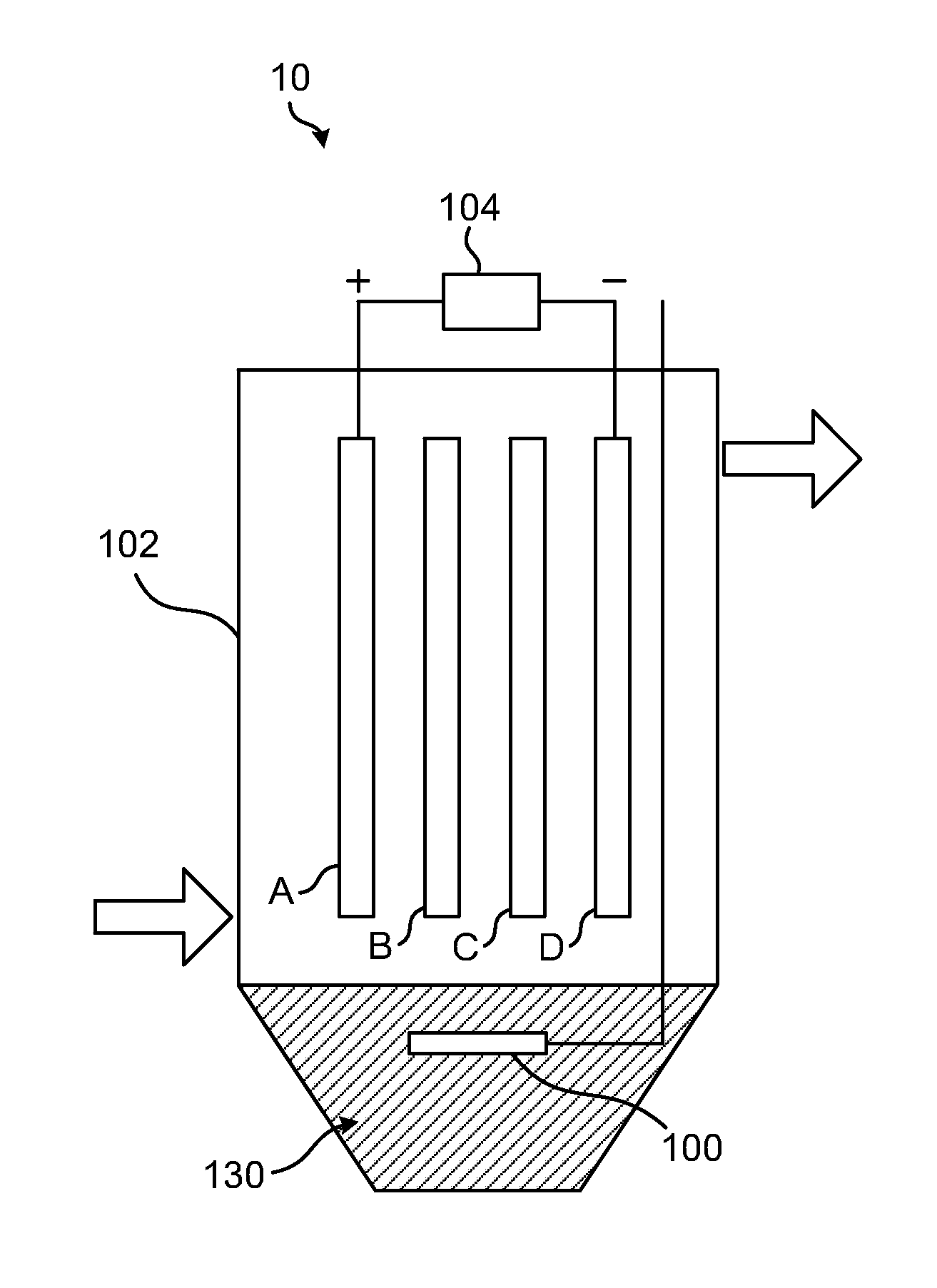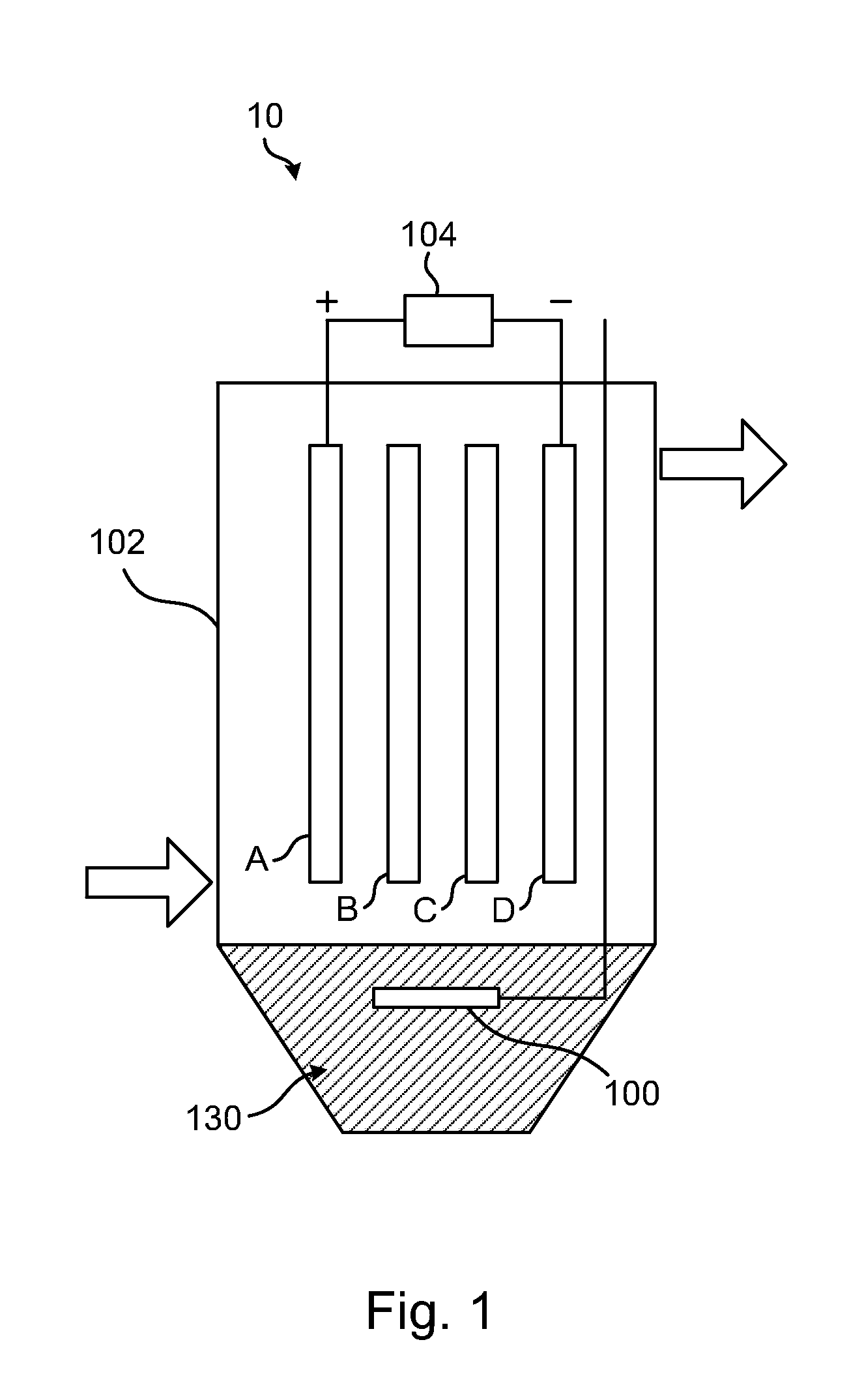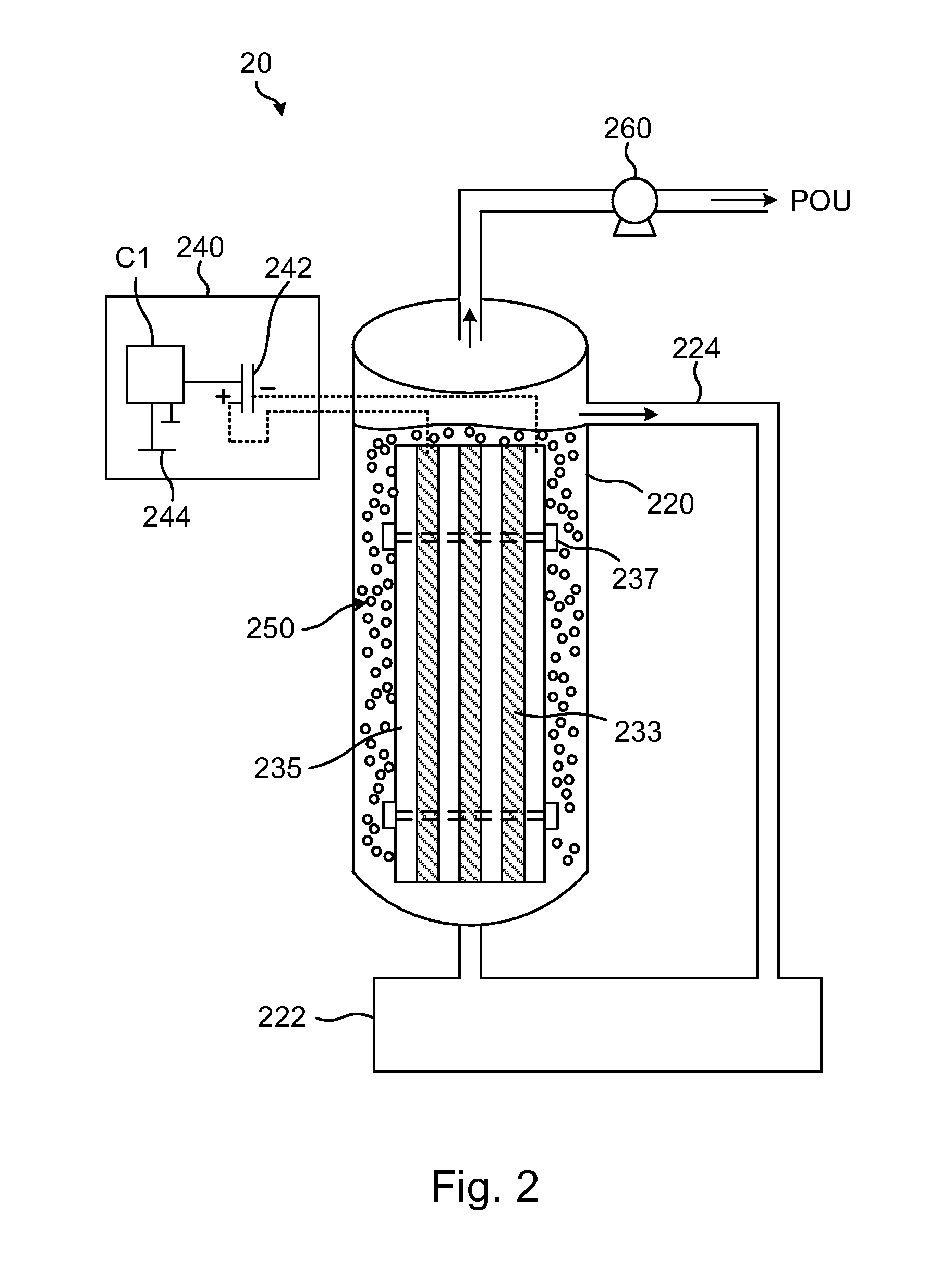Novel method for treating waste waters
a waste water and water treatment technology, applied in the nature of treatment water, waste water treatment from animal processing, water/sewage treatment by oxidation, etc., can solve the problems of increasing the operation cost, consuming energy, and adding burden on the environment and post-treatment, so as to achieve easy separation from the treated seawater, the effect of easy separation
- Summary
- Abstract
- Description
- Claims
- Application Information
AI Technical Summary
Benefits of technology
Problems solved by technology
Method used
Image
Examples
example 1
[0050]Without adjustment, raw seawaters taken from Taiwan Strait are treated by the EC+EO3 method in parallel mode 60 using a system as depicted in FIG. 6. Followings are the dimensions of EC reactor and EO3 generator along with their respective electrode packs:
EC Reactor
[0051]Housing: Cylindrical plastic tube of 17 cm inner diameter and 50 cm in height. It can contain 9 niters (9 L) water for treatment. Seawater is circulated between the EC vessel and an open bucket of 20 L volume for the EC+EO3 treatment.[0052]Electrode: 2 Fe plates and 2 Al plates, each at 11.5 cm wide, 27 cm long and 0.1 cm thick, in bipolar configuration as described in FIG. 1. However, the polarities of the two outer electrodes, Fe and Al, are switched as indicated in Table 2.[0053]The electrode stack is disposed 3 cm above water to protect the electrode leads from corrosion.[0054]DC Power Supply: 100V / 60A.
EO3 Generator
[0055]Housing: Same as the EC reactor. The generator uses a close container that holds 20 L ...
example 2
[0064]A black, messy and strongly foul tannery effluent is treated by the EC+EO3 method in parallel mode 60 of FIG. 6 as Example 1, except the cylindrical EC vessel is directly used as a close reactor for treating 9 L waste water per batch. Only two stages of EC+EO3 treatment using the parameter set of #5 in Table 2 are applied to the tannery effluent for quick assessment of feasibility:[0065]Stage 1 2-hour EC+EO3 treatment followed by activated-carbon adsorption and filtration[0066]Stage 2 1-hour EC+EO3 treatment using a system as shown in FIG. 4 followed by filtration
Table 3 lists the results of 2-stage treatment.
TABLE 3Treatment of a Tannery Effluent by EC + EO3IndicesRaw1st Stage2nd StageBOD (mg / L)2625124945COD (mg / L)56892623582TSS(mg / L)257821032TDS (mg / L)17,00014,90012,700NH3—N (mg / L)24615366Cr6+ (mg / L)31.20.3pH6.17.68.3ColoringBlackClear→lightCrystalbrownClear
[0067]Because the goal of Example 2 is a feasibility investigation of remedying a tannery effluent by EC+EO3, thus, the...
PUM
| Property | Measurement | Unit |
|---|---|---|
| voltage | aaaaa | aaaaa |
| capacitance | aaaaa | aaaaa |
| concentration | aaaaa | aaaaa |
Abstract
Description
Claims
Application Information
 Login to View More
Login to View More - R&D
- Intellectual Property
- Life Sciences
- Materials
- Tech Scout
- Unparalleled Data Quality
- Higher Quality Content
- 60% Fewer Hallucinations
Browse by: Latest US Patents, China's latest patents, Technical Efficacy Thesaurus, Application Domain, Technology Topic, Popular Technical Reports.
© 2025 PatSnap. All rights reserved.Legal|Privacy policy|Modern Slavery Act Transparency Statement|Sitemap|About US| Contact US: help@patsnap.com



